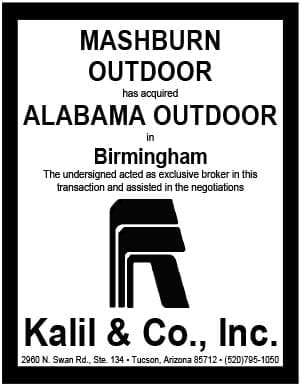 Some terrific responses to yesterday’s 12 Musts for an Out of Home easement.
Some terrific responses to yesterday’s 12 Musts for an Out of Home easement.
Jim McLaughlin, Link Media
I think you are missing a couple of things on the easement. You want the right to pay any unpaid property taxes to keep the property from getting sold at a tax auction, and also get the right to file a lien on the property to recover your tax payment at some point. Second, you also want the right to “remove” the structure, not just operate it, in the event that you lose the right to keep the board there at any time.
Paul Wright, Signvalue
Easements should include a formal survey that shows three areas: 1) access, 2) visibility and 3) utilities. This prevents any confusion or dispute about uses and the areas being acquired.
Michael Grace, Ace Outdoor
When purchasing an easement you better subordinate it with the lender or 1st lien holder. Otherwise, you could risk losing your easement to foreclosure especially in states like Louisiana or Florida. A non-disturbance agreement which assures the billboard company’s rights won’t be interrupted in the event of foreclosure (signed by lien holder) will accomplish the same thing.
Tony Mariani, DDI Media
An easement must have clean title. If there is a loan on the property the easement holder must obtain a non-disturbance agreement from the lender(s) before closing. The easement holder cannot be subordinate or the investment is at risk at no fault of your own.
Richard Rothfelder, Billboard Attorney, Rothfelder and Falick
To clarify the spot-on comments about the need for a subordination or non-disturbance agreement, a mortgage on the property that eventually went into default for non-payment and then foreclosure would ordinarily extinguish other interests and encumbrances made on the property after the mortgage. For example, on day 1 a $100,000 mortgage was executed and secured by a lien on land; on day 2, a perpetual easement was executed on the same land; on day 3, the mortgage went into default, and the holder foreclosed on the mortgage to collect his debt. Under this example, the easement would be cancelled upon the foreclosure of the mortgage. To prevent this from happening, a subordination agreement should be secured, under which the holder of the existing mortgage agreed in writing that he would honor or otherwise not cancel the easement executed subsequent to his mortgage. This example also demonstrates the need for title insurance, or at least a title search before entering an easement. You certainly want to know if there are any encumbrances existing on the land before you purchase the easement, and/or so you can seek subordination from the lien holders if there is such an outstanding lien.
[wpforms id=”9787″]
Paid Advertisement

















